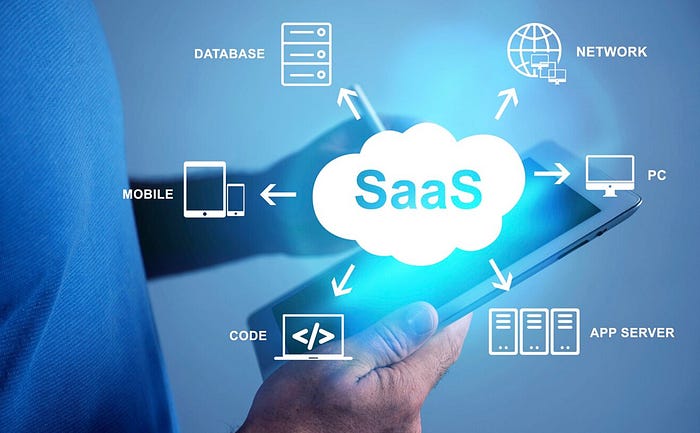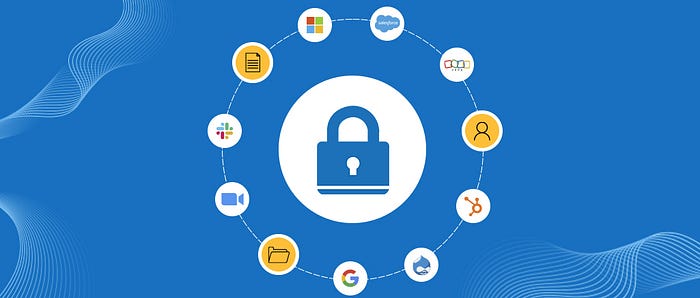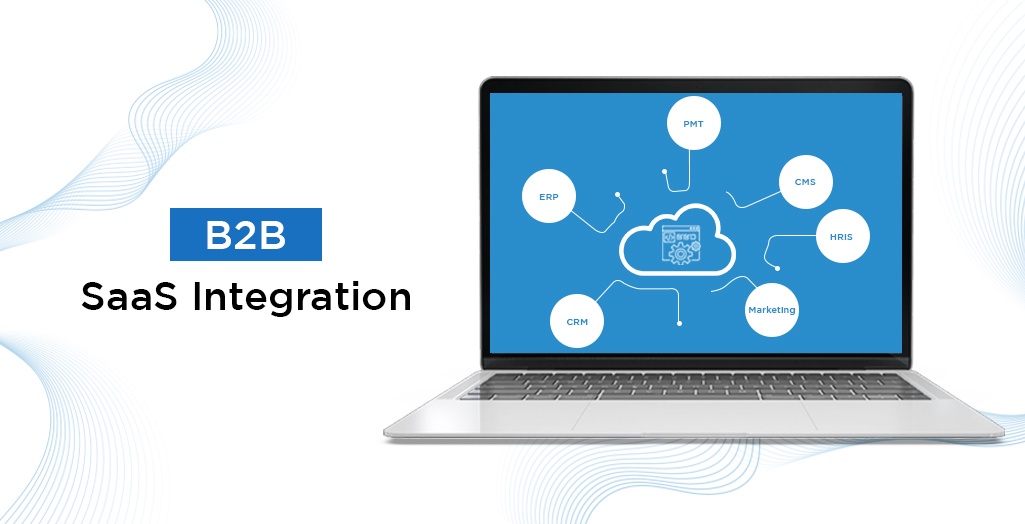Gone are the days of juggling various tools for B2B operations. Today, businesses demand integrated software solutions that streamline tasks onto a single dashboard, saving time and enhancing productivity. These solutions not only connect team members but also streamline operations and track progress effectively. Software as a Service (SaaS) has become a cornerstone in the tech arsenal of businesses, regardless of size, from startups to enterprises.
The global SaaS industry is on a rapid growth trajectory, projected to exceed a USD 571.9 billion investment by 2027, with a compound annual growth rate (CAGR) of 20.6% during the forecast period of 2022–2027 according to BCC research.
To leverage the full potential of SaaS, businesses with multiple departments must ensure each team and user optimizes their respective platforms for desired outcomes. Whether it’s a CRM platform for sales, an ERP system for finance, or an HRIS for the HR department, aligning all SaaS platforms with unified organizational goals and objectives is paramount.
Our detailed Ebook on Remote Team Management is available to download for free HERE
What is SaaS Integration?

Just like connecting APIs or databases, SaaS integration effortlessly links multiple SaaS applications, facilitating smooth data transfer. Usually orchestrated through a centralized cloud platform, such as middleware or an integration platform, SaaS integration simplifies the communication between SaaS apps.
SaaS integration acts as a bridge, enabling interconnected apps to converse seamlessly. This capability allows for data synchronization across various sources or facilitates the transfer of information from one application to another, resolving dependencies and enhancing operational efficiency.
Why is B2B SaaS Integration Important?
Software as a Service (SaaS) integration has become increasingly important for businesses due to its ability to enhance efficiency, streamline processes, and improve overall productivity. Integrating various SaaS applications into their workflows allows businesses to create a cohesive ecosystem where different tools and systems communicate and share data seamlessly. As per the survey done by Gartner in 2022, around 83% of B2B buyers are interested in investing in online services.
Here are the important aspects of the SaaS integration platform for B2B:
1) Streamlined Operations
- B2B SaaS integration facilitates seamless connectivity between various applications used across departments.
- This integration enhances operational efficiency and improves transactions between partners.
- Through centralized backend interfaces, automated data transfer and synchronization are achieved, reducing manual work and ensuring accuracy.
- Streamlining operations saves significant time, allowing for a focus on high-value business activities.
- For example, integrating SAP ERP and Salesforce CRM enables comprehensive insights into customer information after order creation.
2) Robust Collaboration
- B2B SaaS integration platform enhances collaboration through real-time data exchange.
- SaaS connect ensures partners access accurate and up-to-date information, boosting collaboration and communication.
- Automated data transfer streamlines communication and ensures meeting end requirements on time.
- Integrating CRM with ERP via SaaS platforms provides updated customer information for better service.
- Two key integration models: data-level and people-level, enhancing collaboration and workflow efficiency between organizations.
3) Enhanced Customer Experience
- SaaS integration in B2B supply chains enhances customer experience through cohesion and personalization.
- Integrated CRM and order management systems enable seamless order tracking and support, boosting customer satisfaction.
- Aggregating data from various sources empowers businesses to gain insights into customer preferences and buying patterns.
- Tailoring products and services becomes more effective with deeper insights into customer behavior.
4) Scalability & Adaptability
- B2B SaaS integration offers scalability and adaptability as your company grows.
- It supports onboarding new partners, entering new markets, and launching new products.
- Provides flexibility to accommodate business growth and adapt to changing market conditions.
- Acts as a backbone for automation within various departments, ensuring smooth operations.
5) Automation & Accuracy
B2B SaaS integration automates data transfer between cloud-based applications.
- Eliminates errors and delays caused by manual data entry, ensuring accuracy.
- Ensures timely delivery of solutions, enhancing customer satisfaction.
- Improves business performance by streamlining processes and reducing human intervention.
6) Transparency & Security
Streamlines access to data, saving time and fostering transparency.
- Enables comprehensive insights into user trends and preferences for informed decision-making.
- Helps ensure compliance with industry regulations and data security standards.
- Centralizes data management and implements robust security measures to protect sensitive information and reputation.
Popular B2B SaaS Product Integration Patterns
According to a Statista survey conducted in 2022, the US houses approximately 17,000 SaaS companies, catering to 59 billion customers globally. The UK claimed the second spot in the list with 2,000 SaaS companies, serving an impressive 3 billion customers worldwide.
Businesses using SaaS platforms will need an integration platform for B2B SaaS products to streamline the operational workflow and provide a centralized solution. The popular patterns for B2B SaaS integration are:
- Vendor-based (iPaaS): It refers to an Integration Platform as Service solutions offered and managed by specific vendors or providers facilitating the integration of various applications, systems, and data sources within an organization.
- Developer-based SaaS Integration: It is a process of integrating SaaS applications using developer-centric tools and resources. In this approach, developers leverage APIs, SDKs, and other tools provided by SaaS vendors to build custom integrations between different applications.
- Event-driven SaaS Integration: Integration of SaaS with an event-driven approach relies on the exchange of events or messages between different systems. It is designed to respond to specific events or changes occurring in SaaS apps triggering actions and sharing data in real-time.
- Scheduled Integration: When dealing with a system lacking webhooks or pub/sub-system support, you can turn to scheduled integration. Unlike event-driven setups, scheduled integration operates on a set schedule, activating at designated times to retrieve data.
- Synchronous Integration: This approach is used for immediate feedback or confirmation, such as online transactions or interactive communication between apps. With synchronous integration, data is exchanged and actions are performed immediately upon request.
- Hybrid Integration: With hybrid integration, it is possible to perform two integration patterns in a single integration with defined workflows and logic. It involves the combination of elements of both cloud-based SaaS solutions and on-premises systems to create a cohesive and unified data ecosystem.
Read the full article here:
Why B2B SaaS Integration Matters: Key Benefits for Your Business
B2B SaaS Integration Security Measures

There are some challenges businesses can face with the process of B2B SaaS integration- SaaS sprawl is among the biggest.
The development of SaaS solutions frequently results in the creation of data silos and the complication of manual processes, particularly in organizations utilizing multiple apps to manage various operations. Moreover, when the permissions of these SaaS applications overlap, it can introduce complexities during the phase of SaaS integration, affecting the integration process, business operations, and growth.
Moreover finding the right SaaS integration for B2B is another challenge followed by the risk of data security. Here are a few effective security measures applicable to integration platforms for B2B SaaS:
- Incorporating real-time threat detection and protection
- Enhancing data integration capabilities
- Enforcing strict protocols against password sharing
- Implementing robust access controls with multi-factor authentication
- Continuously monitoring integration activities and conducting regular audits
- Conducting thorough vulnerability assessments and management procedures
Conclusion
In today’s era of technological advancement and data-driven businesses, it is essential to streamline and manage business operations leveraging SaaS solutions. Integrating these existing SaaS solutions adds significant value by synchronizing data across various software, thereby enhancing overall business processes.
Ace Infoway has extensive experience of more than 20 years serving multiple businesses with SaaS product development around the globe with a team of experts. We offer comprehensive SaaS development services and result-oriented consultation. Contact us if you’re looking for an experienced and skilled team for B2B SaaS integration.


No comments yet